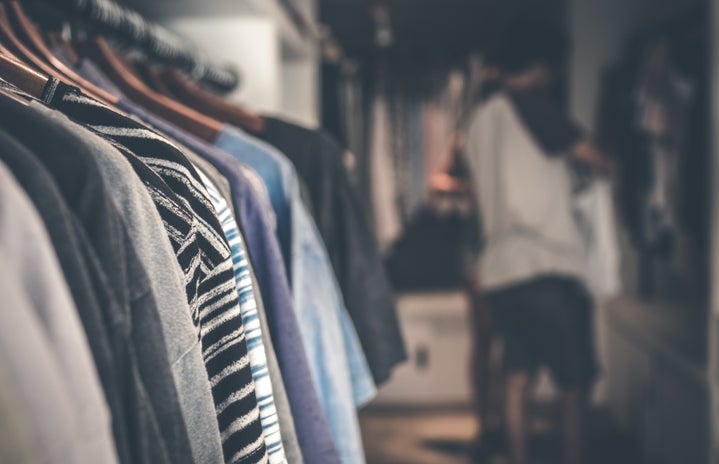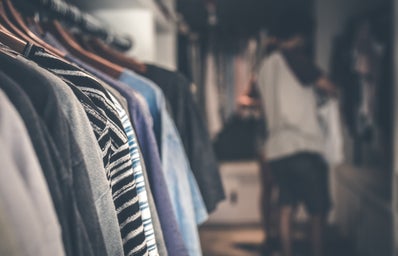Gen Z is known for its global and ethical awareness, but also its devotion to social media and the oncoming trends deriving from these platforms. The leading platform, TikTok, now includes popular fashion content including detailed shopping hauls. These hauls are made possible by fast fashion brands selling clothing for enticingly lower prices, yet behind the excitement of these “great deals” comes a desperate need for that Gen Z awareness. The time to switch your priorities for fast fashion sweet spots is now.
To identify red flags in the fashion industry there are three main factors to consider: people, environment and animals. To trust a brand they must be open and easy to trace back on their actions aligned with these factors, and not greenwashing their target market.
Clothing that is made quickly and sold at extremely low prices is an immediate red flag that points to supply chains. These companies are cutting corners to make these pieces easily available to consumers. One profit shortcut includes putting garment workers in unsafe conditions rather than investing in safe environments. In 2012, more than 100 garment workers outside of Bangladesh died in a factory fire that could have been avoided with ethical practices. Garment workers are also not fairly paid for their work and sacrifice. The most famous fast-fashion brand right now is, Shein. In 2021, it was reported that their garment workers worked 75 plus hours per week and even worked at several different companies to make a fair wage.
Some companies have reevaluated their codes of conduct and made commitments to their worker’s well-being. As a society, we must keep an eye on tracing these words back to actions.
The environmental factors of clothing focus on water use, resources and disposal routines. With rising demands in fast fashion, extreme amounts of water are used to produce fabrics. This industry uses 93 billion cubic meters of water per year. Not only can consumers be surprised by this water impact, but also by the fibers in their clothing. The chances of your faux leather pants being plastic are high. When microplastics are used to produce clothing, this becomes a danger for consumers and the environment, as they can be absorbed by both. It also does not help that these pieces of clothing are not bio-degradable, as they are disposed of in large amounts creating mass pollution in dumping grounds.
This factor has been the least publicized topic when talking about fast fashion, as activists hope to get equal environmental awareness.
While fast fashion hauls are being glamourized on the internet, ethical fashion awareness should be far more acknowledged. Having this knowledge can be hard to ignore, so there are ways to do your part. Five key ways to maintain a sustainable wardrobe include:
1. Shopping Secondhand Use: Unique pieces await your purchase in local thrift shops or online consignments. Three recommended apps to shop secondhand use include Depop, Grailed, and TheRealReal. Each of these apps has its own unique features such as buyer communication, shopping filters, free downloads and even installment payments for affordable options.
2. Reuse Recycle: Do not dump your clothing. Make time to donate to your local donation centers, hand your pieces down to friends or even resell your clothing online or to consignment shops. Large companies such as Plato’s Closet and Uptown Cheapskate are always taking used clothing to buy and resell. If you are inspired enough, it is also encouraged to repurpose your clothing in fun projects as well!
3. Go Vegan: Using animals for the basic human need of clothing was reasonable for our paleolithic ancestors, but 2022 says otherwise. Contributing to animal cruelty is not an ethical wardrobe choice. And although the “go vegan” phrase is to steer away from the abuse of animals, stay away from microplastic alternatives as well. It is best to stay aware by reading into your fabrics before purchasing.
4. Do Some Research: Or not because another app has traced brands back on their sustainability and researched for you. Good on You is an app that rates brands based on those three main factors. Search a company and read up on their commitment to sustainability before contributing sales to them. This can also be downloaded for free today. Doing your own research is still encouraged but do watch out for greenwashing statements and follow credible sources.
5. Use What You Have: The ultimate goal of a sustainable wardrobe is slow fashion; to stop mass consumption overall. Break some bad habits if needed, and only shop what you need and appreciate what you have now. One piece can be played into many different outfits as you get creative!. The idea is to desensitize the need to shop in mass amounts and frequencies.


